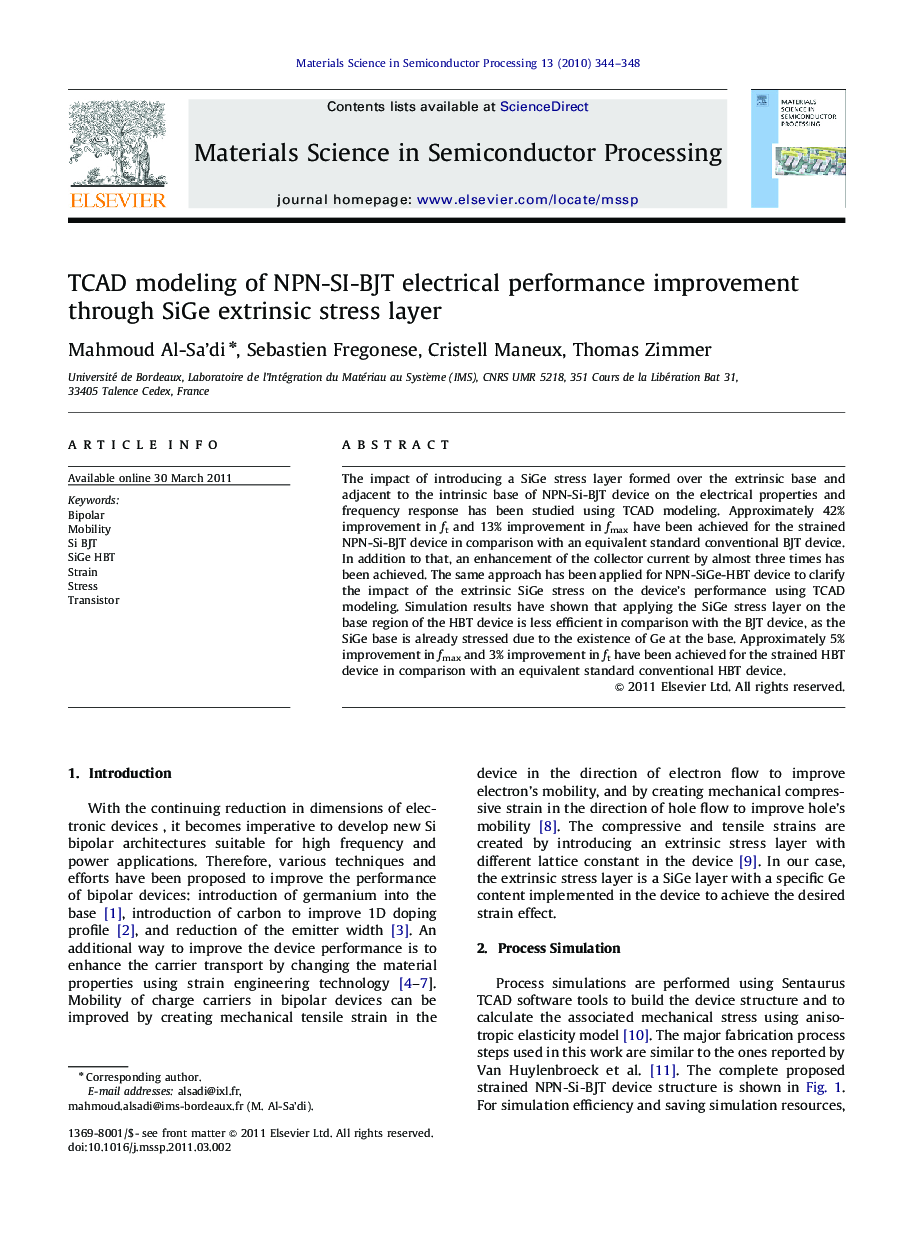| Article ID | Journal | Published Year | Pages | File Type |
|---|---|---|---|---|
| 729626 | Materials Science in Semiconductor Processing | 2010 | 5 Pages |
The impact of introducing a SiGe stress layer formed over the extrinsic base and adjacent to the intrinsic base of NPN-Si-BJT device on the electrical properties and frequency response has been studied using TCAD modeling. Approximately 42% improvement in ft and 13% improvement in fmax have been achieved for the strained NPN-Si-BJT device in comparison with an equivalent standard conventional BJT device. In addition to that, an enhancement of the collector current by almost three times has been achieved. The same approach has been applied for NPN-SiGe-HBT device to clarify the impact of the extrinsic SiGe stress on the device's performance using TCAD modeling. Simulation results have shown that applying the SiGe stress layer on the base region of the HBT device is less efficient in comparison with the BJT device, as the SiGe base is already stressed due to the existence of Ge at the base. Approximately 5% improvement in fmax and 3% improvement in ft have been achieved for the strained HBT device in comparison with an equivalent standard conventional HBT device.
